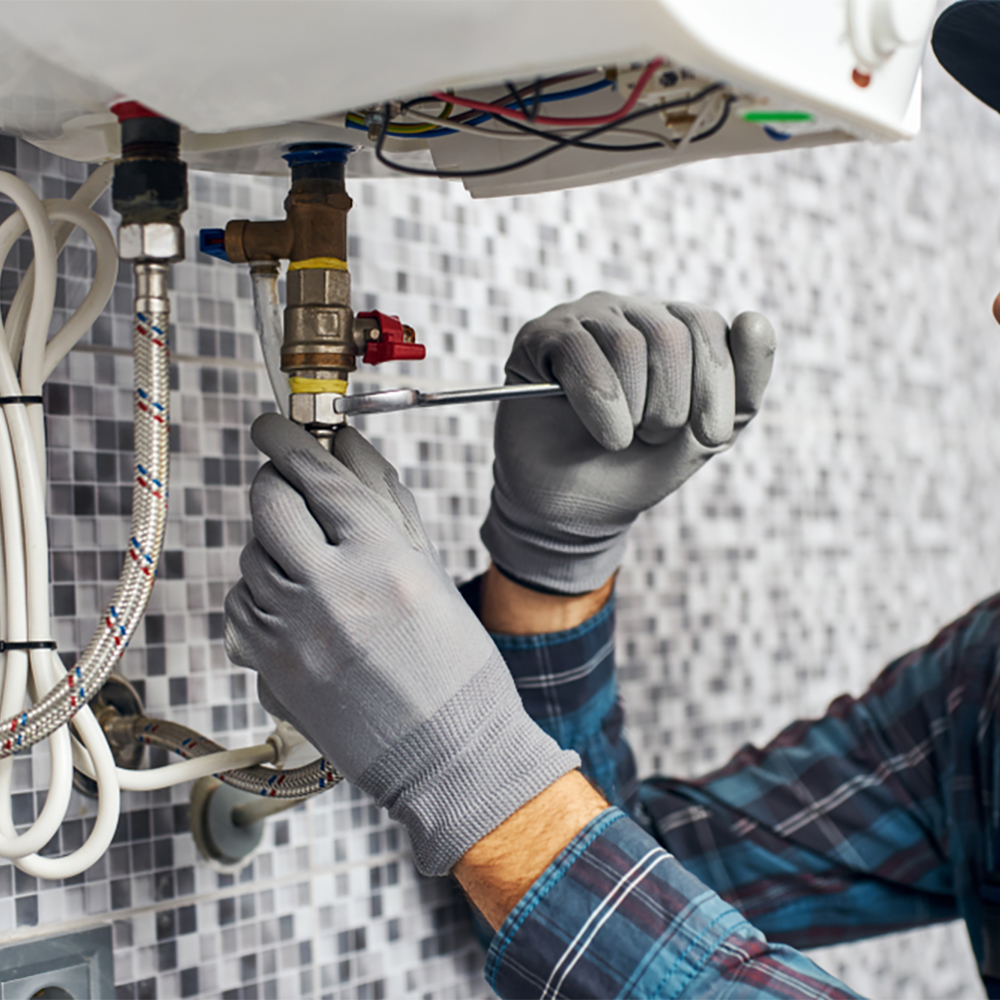
If you have some essential tools, repairing an electric water heater is easy. This guide will help you identify and fix common electric water heater issues.
Step 1: Turn off the power
Always ensure the power is turned off before repairing your electric water heater. Make sure to shut down the power in your circuit breaker or fuse box to ensure your safety.
Step 2: Check the thermostat
Check the thermostat using a multimeter to check if it works accurately.
If your water heater is not heating water or overheating, it’s essential to examine the thermostat. Use a multimeter and check to see if there is continuity when testing the thermostat. Replace the thermostat (if not working).
Step 3: Inspect the heating elements
The problem with your water heater may be related to the heating elements, especially if it is not providing any hot water or is only giving lukewarm water. Check for any signs of damage or corrosion on the elements. Use a multimeter to test each heating element for continuity, and replace any that are defective.
Step 4: Examine the wiring
Check the wiring of your electric water heater for loose or damaged connections. Secure loose connections and replenish damaged wires.
Step 5: Check the pressure relief valve
If your water heater is not functioning properly, it could be due to a leaking pressure relief valve. This valve regulates the pressure that builds up inside the water heater. To test the valve, lift the lever and see if water flows out easily. If it does not operate correctly, you may need to replace the valve.
Step 6: Flush the tank
To maintain the tank’s efficiency, clean it regularly to prevent sediment build-up. First, turn off the power and close the cold water supply valve. Open the pressure relief valve to drain the tank, then connect a hose to the drain valve and direct it to an appropriate drain. Open the drain valve until the tank is empty. Afterwards, close the drain valve, reopen the cold water supply valve to refill the tank, and finally, turn the power back on.
Step 7: Inspect the anode rod
The anode rod is crucial for preventing tank corrosion. Inspect the anode rod for excessive corrosion and replace it if needed.
Step 8: Look for leaks
Check your water heater for any leaks, paying particular attention to the connections at both the top and bottom of the tank. If you notice any damage, be sure to repair or replace those connections.
Following these steps can help you identify and address any issues. However, if the problem continues, it’s a good idea to hire a professional for further assistance.
At Infiniti HVAC, we are equipped to handle your electric water heater issues with expertise.

